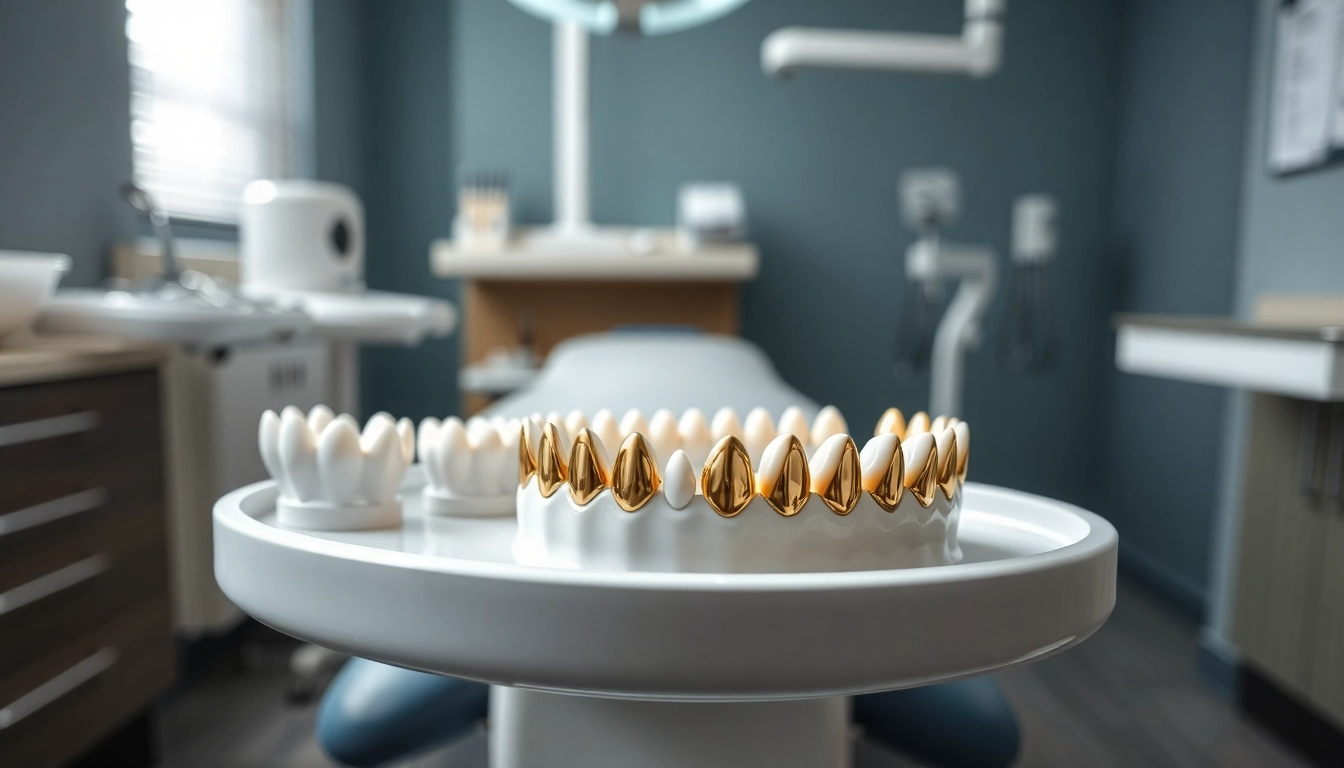What Are Dental Crowns?
Definition and Purpose of Crowns
A dental crown, often referred to as a cap, is a tooth-shaped restoration that encases a damaged or decayed tooth. This dental restoration is designed to restore the tooth’s shape, size, strength, and overall appearance. Crowns are particularly beneficial for protecting weakened teeth from further damage and improving the functionality of teeth that are compromised due to decay or injury. In some cases, crowns are utilized as a part of dental implants or following root canal therapy to provide a protective barrier over the remaining tooth structure. For more information on the various options available, you may explore options about crowns that your dentist may recommend.
Common Reasons for Needing a Crown
There are several reasons why a patient may require a dental crown. Some of the most common include:
- Restoration of a Severely Decayed Tooth: When a tooth has extensive decay that cannot be repaired with a filling, a crown can restore its structure and strength.
- Protection of a Weak Tooth: Crowns provide additional support for teeth that are cracked, weakened, or have undergone a root canal, preventing further damage.
- Cosmetic Improvements: Crowns can be used to enhance the appearance of stained or misshapen teeth, contributing to an improved smile.
- Replacement for Missing Teeth: Crowns can also serve as anchors for dental bridges or be fitted on top of dental implants to replace missing teeth.
Different Materials Used for Crowns
Dental crowns can be crafted from several materials, each offering unique advantages:
- Porcelain: This material is popular for its natural appearance and blend with existing teeth. Porcelain crowns are ideal for front teeth due to their aesthetic appeal.
- Metal: Metal crowns, such as gold or alloy, are extremely durable and are best suited for back teeth where pressure from chewing is greatest.
- Porcelain-Fused-to-Metal: These crowns combine the durability of metal with the aesthetic qualities of porcelain. They provide strength while maintaining a similar appearance to natural teeth.
- Resin: Although less common, resin crowns are an option for less stressed areas and are typically less expensive than other materials.
Types of Dental Crowns
Porcelain Crowns
Porcelain crowns are a favored choice among patients seeking natural-looking restorations. They are custom-made to match the color and contour of adjacent teeth, making them virtually indistinguishable from the natural tooth.
Metal Crowns
Metal crowns are composed of durable materials such as gold, palladium, or base metal alloys. These crowns are significantly stronger than porcelain crowns, making them ideal for molars where chewing forces are greatest. Their metallic color, however, may be a drawback for front teeth.
Porcelain-Fused-to-Metal Crowns
Porcelain-fused-to-metal crowns represent a balanced approach, offering strength and aesthetic appeal. The underlying metal structure provides durability, while the outer porcelain layer allows for a natural appearance. These crowns may be slightly thicker than full porcelain crowns but are suitable for both front and back teeth.
The Procedure for Getting a Crown
Initial Consultation and Assessment
The journey towards obtaining a dental crown begins with an initial consultation with your dentist. During this visit, the dentist will perform a thorough examination of your teeth, including X-rays if necessary, to assess the extent of damage to the affected tooth. Based on this assessment, the dentist will discuss the best type of crown for your specific needs and outline the next steps.
Steps Involved in Crown Placement
Once the decision to proceed with a crown is made, the following steps are typically involved in the placement:
- Tooth Preparation: The dentist will begin by numbing the area surrounding the affected tooth. They will then reshape the tooth by removing a portion of the outer layer to accommodate the crown.
- Impression Taking: After the tooth has been prepared, the dentist will take impressions of the reshaped tooth and the surrounding teeth. This helps in crafting a custom crown that fits perfectly.
- Temporary Crown Placement: While the permanent crown is being fabricated in a dental laboratory, a temporary crown is placed to protect the prepared tooth.
- Final Crown Placement: Once the permanent crown is ready, the dentist will remove the temporary crown and place the new crown, ensuring optimal fit and aesthetics before securing it with dental cement.
Expected Recovery Time and Aftercare
Most patients experience minimal discomfort following the placement of a crown. Full recovery may take a few days, and patients are advised to avoid hard foods during this period. Regular dental hygiene practices should be maintained, including brushing and flossing. Follow-up appointments may be necessary to ensure the crown has settled properly and to check on the surrounding gum health.
Costs Associated with Dental Crowns
Average Prices for Different Types of Crowns
The cost of dental crowns can vary significantly depending on the material used, the complexity of the case, and geographic location. Here’s a general pricing guideline:
- Porcelain Crowns: Approximately $800 to $3,000 per tooth.
- Metal Crowns: Generally range from $500 to $1,500 per tooth.
- Porcelain-Fused-to-Metal Crowns: Generally cost between $500 and $1,500.
Factors Influencing the Cost of Crowns
Several factors can influence the overall cost of dental crowns:
- Material Type: The choice of materials plays a crucial role in cost variations, with metals typically being less expensive than porcelain.
- Location: Dental costs vary by region, with urban areas often having higher fees due to increased overhead costs.
- Dental Practice Expertise: More experienced dentists may charge higher fees based on their skill and the quality of their work.
- Insurance Coverage: Depending on your insurance provider, coverage for crowns may vary, affecting out-of-pocket expenses.
Insurance Coverage and Payment Options
Many dental insurance plans cover a portion of the cost of crowns, especially if they are deemed medically necessary. It is advisable to check with your insurance provider to understand your specific coverage limits and potential out-of-pocket costs. For those without insurance coverage, many dental practices offer flexible payment options or financing plans to help manage expenses.
Maintaining Your Dental Crowns
Daily Care Tips for Long-lasting Crowns
Once you have received your dental crown, maintaining its longevity is crucial. Here are some daily care tips:
- Practice Good Oral Hygiene: Brush twice daily with fluoride toothpaste and floss daily to keep your mouth clean.
- Limit Stain-causing Foods: Minimize consumption of foods and beverages that can stain porcelain crowns, such as coffee, tea, and red wine.
- Avoid Hard Foods: Be cautious with very hard foods that might exert excessive pressure on your crown.
Signs That a Crown Needs Replacement
While dental crowns are designed for durability, there are instances when a crown may need to be replaced. Signs indicating this may include:
- Visible cracks or chips in the crown.
- Persistent discomfort or sensitivity in the tooth or surrounding area.
- Loose crowns that do not fit securely on the tooth.
- Notable discoloration or aesthetic concerns.
Regular Dental Check-ups for Optimal Care
Regular dental check-ups are vital for assessing the health of your crowns and surrounding teeth. During these visits, your dentist will evaluate the condition of your crown and offer professional cleaning to ensure optimal oral health. Consistent monitoring can catch potential issues early, thereby prolonging the life of your crown.



